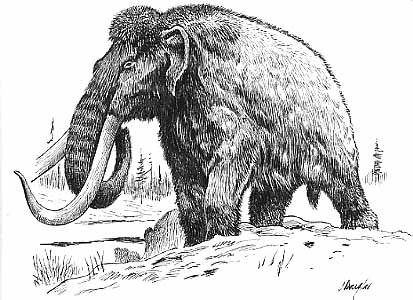

The appearance and behavior of this species are among the best studied of any prehistoric animal because of the discovery of frozen carcasses in Siberia and Alaska, as well as skeletons, teeth, stomach contents, dung, and depiction from life in prehistoric cave paintings. Mammoth remains had long been known in Asia before they became known to Europeans in the 17th century. The origin of these remains was long a matter of debate, and often explained as being remains of legendary creatures. The mammoth was identified as an extinct species of elephant by Georges Cuvier in 1796.
The woolly mammoth was roughly the same size as modern African elephants. Males reached shoulder heights between 2.7 and 3.4 m (9 and 11 ft) and weighed up to 6 tonnes (6.6 short tons). Females averaged 2.6–2.9 metres (8.5-9.5 ft) in height and weighed up to 4 tons (4.4 short tons). A newborn calf weighed about 90 kilograms (200 lb).
The woolly mammoth was well adapted to the cold environment during the last ice age. It was covered in fur, with an outer covering of long guard hairs and a shorter undercoat. The color of the coat varied from dark to light. The ears and tail were short to minimize frostbite and heat loss. It had long, curved tusks and four molars, which were replaced six times during the lifetime of an individual. Its behavior was similar to that of modern elephants, and it used its tusks and trunk for manipulating objects, fighting, and foraging. The diet of the woolly mammoth was mainly grass and sedges. Individuals could probably reach the age of 60. Its habitat was the mammoth steppe, which stretched across northern Eurasia and North America.
The woolly mammoth coexisted with early humans, who used its bones and tusks for making art, tools, and dwellings, and the species was also hunted for food. It disappeared from its mainland range at the end of the Pleistocene 10,000 years ago, most likely through climate change and consequent shrinkage of its habitat, hunting by humans, or a combination of the two. Isolated populations survived on St. Paul Island until 6,400 years ago and Wrangel Island until 4,000 years ago.
After its extinction, humans continued using its ivory as a raw material, a tradition that continues today. It has been proposed the species could be recreated through cloning, but this method is as yet infeasible because of the degraded state of the remaining genetic material. Read more
Yuka The Woolly Mammoth Just Gave Us The Oldest RNA Ever Sequenced Science Alert - November 14, 2025
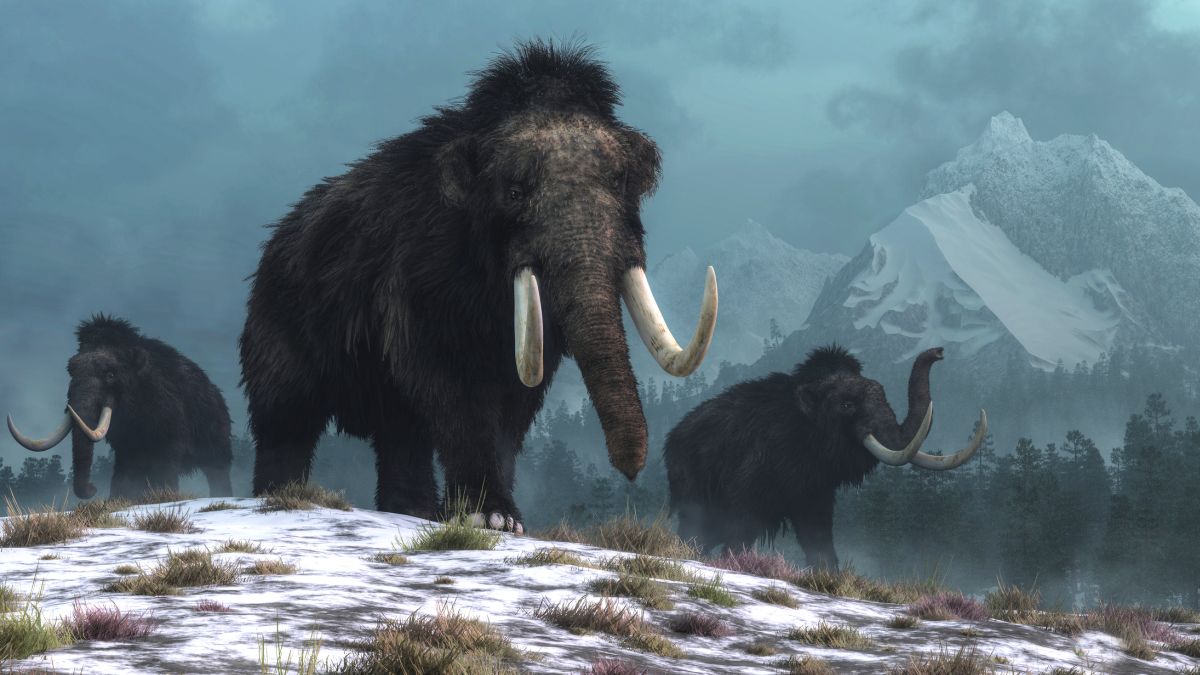
A woolly mammoth that lived and died nearly 40,000 years ago has given us a spectacular scientific first, millennia later.
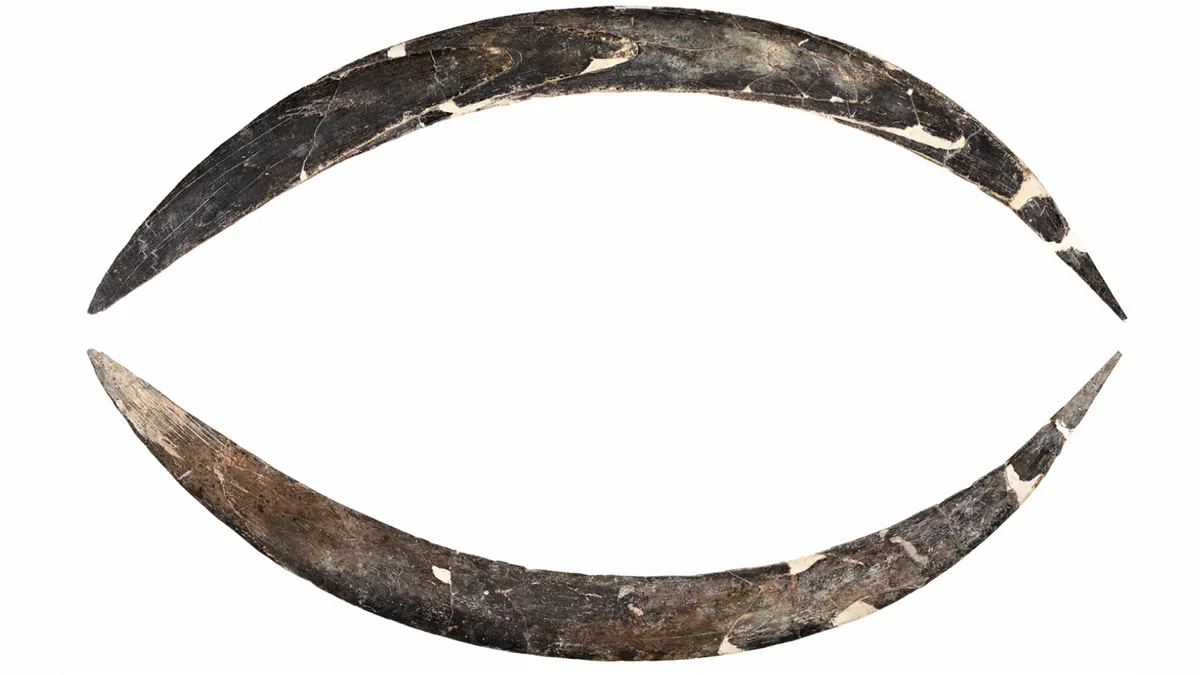
40,000-year-old mammoth tusk boomerang is oldest in Europe - and possibly the world
An unusual mammoth tusk boomerang discovered in a cave in Poland is 40,000 years old - making it Europe's first example of this complex tool and possibly the oldest boomerang in the world, a new study finds.
Oldest-known North American woolly mammoth revealed in 'long-lost' ancient DNA Live Science - April 11, 2025
Researchers have discovered the oldest-known wooly mammoth fossil in North America and uncovered its genetic secrets, according to a new study. The 216,000-year-old tooth, found along the Old Crow River in the Yukon territory in Canada, confirms that wooly mammoths (Mammuthus primigenius) arrived in North America at least 100,000 years earlier than scientists initially thought.

The 50,000-year-old female mammoth has been nicknamed "Yana" after the river in whose basin it was discovered this summer
Complete mastodon jaw fossil found in New York backyard NBC - December 18, 2024
The mastodon jaw, which was believed to be from an adult, was unearthed by researchers after the homeowner spotted it coming out from his lawn. The homeowner initially found two teeth hidden by a plant on the property, and after digging just a few inches underneath that, two more teeth were found.
A remarkable discovery in Orange County, New York, has unearthed a complete mastodon jaw, marking the first such find in the State in over 11 years NYS Dept. of Education - December 17, 2024
A remarkable discovery in Orange County, New York, has unearthed a complete mastodon jaw, marking the first such find in the State in over 11 years. The jaw, along with additional bone fragments, was recovered by researchers from the New York State Museum and SUNY Orange from the backyard of a residence near Scotchtown, New York. The fossils are scheduled for carbon dating and comprehensive analysis to determine the mastodon’s age, diet, and habitat during its lifetime. Following preservation and scientific analysis, the artifact will be featured in public programming in 2025.
Excavation efforts by Museum and SUNY Orange staff yielded a full, well-preserved mastodon jaw belonging to an adult, as well as a piece of a toe bone and a rib fragment. This significant find will enhance our understanding of the region’s Ice Age inhabitants and highlight the abundance of prehistoric wonders yet to be discovered. With over 150 mastodon fossils found statewide to date—about one-third in Orange County—the area remains New York’s premier hotspot for these ancient relatives of modern elephants.
These Ingenious Weapons May Have Enabled Ice Age Hunters To Kill Mammoths IFL Science - August 21, 2024
North American hunter-gatherers may have developed an innovative method for killing Ice-Age megafauna like mammoths, according to the authors of a new study. Rather than throwing spears at their prey, members of the iconic Clovis culture might have used “braced shaft weapons”, or pikes, to inflict catastrophic injuries on their victims.
To kill mammoths in the Ice Age, people used planted pikes, not throwing spears, researchers say PhysOrg - August 21, 2024
Early humans may have braced the butt of their pointed spears against the ground and angled the weapon upward in a way that would impale a charging animal. The force would have driven the spear deeper into the predator's body, unleashing a more damaging blow than even the strongest prehistoric hunters would have been capable of on their own.
Woolly mammoth de-extinction inches closer after elephant stem cell breakthrough Live Science - March 7, 2024
Scientists at the company Colossal Biosciences have derived induced pluripotent stem cells from elephants, which they say could boost efforts to resurrect woolly mammoths. iPSCs also open a path to creating elephant sperm and egg cells, which are essential for mammoth de-extinction, in the lab. With fewer than 52,000 Asian elephants left in the wild.
Tusk Tells The Tale Of Huge Journey Made By A Woolly Mammoth 14,000 Years Ago IFL Science - January 18, 2024
Using little more than a tusk, scientists have pieced together the lifetime travels of a single woolly mammoth that wandered North America more than 14,000 years ago. Starting life in the western Yukon, the mammoth traveled hundreds of kilometers through northwestern Canada before arriving at her final resting place, an early human settlement in present-day Alaska. It seems there’s little doubt that this venturing mammoth was slaughtered by a hungry group of hunter-gatherers.
Perfectly Frozen Baby Woolly Mammoths Reveal Secrets Of Prehistoric Pachyderms. Lyuba and Khroma lived over 40,000 years ago, but are still making an impact today. IFL Science - November 4, 2023
For millions of years, woolly mammoths roamed across Europe and Asia, even for a while after humans came along. Whilst we no longer live alongside them - although some are seeking to change that - it turns out there’s still plenty we can learn about these hairy giants, thanks to some remarkably well-preserved baby woollies.
1.2-Million-Year-Old DNA Extracted From Mammoth Tooth Buried In Siberian Permafrost IFL Science - July 25, 2023
In 2021, ancient DNA was recovered from a 1.2-million-year-old mammoth tooth – the oldest DNA that had ever been recovered at the time. Not only did this incredible feat push the boundaries of what scientific methods are capable of, but the project also revealed a new lineage in the mammoth family.
Ancient DNA Sheds Light on Wooly Mammoth Evolution, And They Weren't Always So Fluffy Science Alert - April 19, 2023
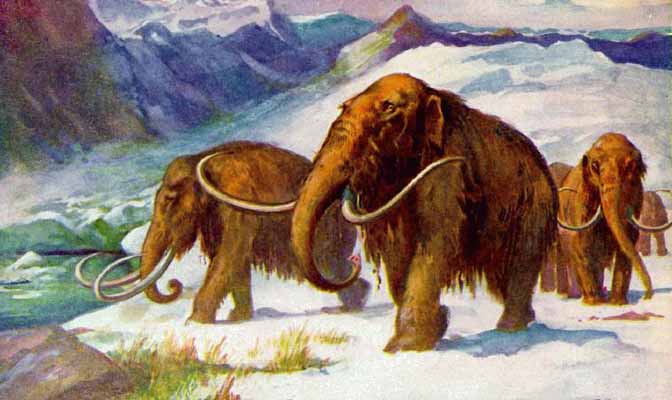
As wooly mammoths grazed frigid Siberian steppes for more than half a million years, they evolved increasingly fluffy fur, large fat deposits, and smaller ears, according to a new study. By comparing the genomes of modern elephants with those of multiple wooly mammoths - including individual mammoths that lived 600,000 years apart - researchers gained new insight into the evolution of these ice-age icons. Distinctive features like fluffy fur and fat deposits were already genetically encoded in early wooly mammoths, the study found, but these and other characteristics seem to have grown more pronounced as the mammoths adapted to Siberia over hundreds of millennia.
A 'near complete' mummified baby woolly mammoth was discovered in a Canadian gold field CNN - June 26, 2022
They were looking for gold in the permafrost of Canada's Klondike. Instead, they discovered what Canadian experts say is the most complete mummified woolly mammoth found in North America.
Ice age mammoth, woolly rhino and hyena bones uncovered in English town Live Science - February 9, 2022
The bones of a woolly mammoth, woolly rhinoceros, hyena and wolf recently discovered in an English town are thought to date to the last Ice Age. The animal remains turned up during the construction of a new town called Sherford, which is located in Devon county, near Plymouth, BBC News reported. Construction on the 5,500-home town began in 2015, and the developers called in archaeologists to help with the project from the outset. While excavating a cave in the area, the team discovered the tusk, molar tooth and other bones of a woolly mammoth, as well as the incomplete skull and lower jaw of a woolly rhinoceros
Study takes unprecedented peek into life of 17,000-year-old mammoth PhysOrg - August 13, 2021
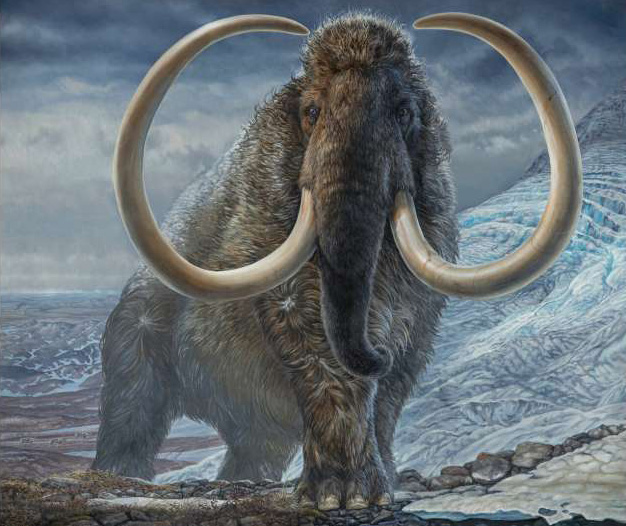
An international research team has retraced the astonishing lifetime journey of an Arctic woolly mammoth, which covered enough of the Alaska landscape during its 28 years to almost circle the Earth twice. Scientists gathered unprecedented details of its life through analysis of a 17,000-year-old fossil from the University of Alaska Museum of the North. By generating and studying isotopic data in the mammoth's tusk, they were able to match its movements and diet with isotopic maps of the region.
An Ancient Woolly Mammoth Trekked So Far, It Could Have Circled The Globe Twice Science Alert - August 13, 2021
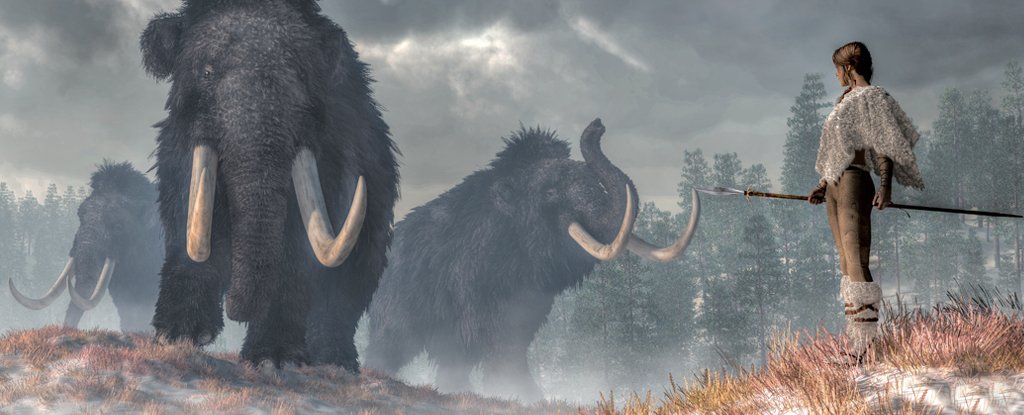
Glacial melts have defrosted incredibly well preserved specimens, with their DNA giving us new perspectives on their extinction. But as mammoths are 4,000 years long gone, many mysteries remain about how they lived their daily lives. Scientists have now analyzed chemical isotopes in the remains of one such creature, mapping out its biography as it wandered the Arctic fringe. Today, the lands known as Beringia are made up of Siberian tundra, Alaskan ice, or the seafloor between the ocean that separates the continents. When the beast in this latest study walked the land at the end of the Pleistocene, more than 17,000 years ago, the range was a vast landscape of grasslands that offered a refuge from the worst of the icy climate. The studied remains - a 1.7-meter-long tusk - did not disappoint. The mammoth, revealed to be male via an analysis of genetic material in the tusk, appears to have spent its entire life adventuring across the tundra, traveling far enough to have almost circled Earth twice during its 28 years of life.
Mammoth tusk holds clues to ice age extinctions YouTube: - August 13, 2021
The last woolly mammoths lived on Wrangel Island in the Arctic Ocean; they died out 4,000 years ago within a very short time Science Daily - October 7, 2019
The researchers believe a combination of isolated habitat and extreme weather events, and even the spread of prehistoric man may have sealed the ancient giants' fate.
50,000-Year-Old Tiara Made from Woolly Mammoth Ivory Found in Denisova Cave Live Science - December 14, 2018
Archaeologists recently discovered the remains of an ancient tiara that was worn by a man. The question now is whether the head crown was meant to mark its wearer's royalty - or simply hold back his hair. The ivory tiara turned up this summer in the Denisova Cave in the Altai mountains of Siberia. The artifact, made from the tusks of the now-extinct woolly mammoth, is between 35,000 and 50,000 years old - likely the oldest one found in the North Eurasia area to date. The findings, first reported by The Siberian Times, haven't yet been published in a scientific journal, but the authors plan to submit their report for publication next year.
Ancient trail of Columbian mammoths uncovered in south-central Oregon PhysOrg - February 12, 2018
A fossilized trackway on public lands in Lake County, Oregon, may reveal clues about the ancient family dynamics of Columbian mammoths. Recently a team found a trackway includes that 117 footprints thought to represent a number of adults as well as juvenile and infant mammoths.
DNA clues to why woolly mammoth died out BBC - March 3, 2017
The last woolly mammoths to walk the Earth were so wracked with genetic disease that they lost their sense of smell, shunned company, and had a strange shiny coat. That's the verdict of scientists who have analyzed ancient DNA of the extinct animals for mutations. The studies suggest the last mammoths died out after their DNA became riddled with errors. The knowledge could inform conservation efforts for living animals. There are fewer than 100 Asiatic cheetahs left in the wild, while the remaining mountain gorilla population is estimated at about 300. The numbers are similar to those of the last woolly mammoths living on Wrangel Island in the Arctic Ocean around 4,000 years ago.
Last Alaskan woolly mammoths 'died of thirst' BBC - August 2, 2016
One of the last known groups of woolly mammoths died out because of a lack of drinking water, scientists believe. The Ice Age beasts were living on a remote island off the coast of Alaska, and scientists have dated their demise to about 5,600 years ago.
The smoking gun 'proving ancient man killed woolly mammoth 45,000 years ago' Ancient Origins - June 1, 2016
When Science journal earlier this year highlighted an ancient woolly mammoth with suspected spear wounds it provoked media interest around the world. Until now, the pictures of the remarkable prehistoric 'injuries' were not widely seen outside academic circles. Today The Siberian Times is publishing the images which respected Russian scientists believe is clear proof of ancient man's attacks on a creature preserved in the permafrost. If true, the implications are enormous. It would mean, firstly, that man was present in the frozen Arctic wastes a full 10,000 years earlier than previously understood. Yet it would also establish that early Siberians were just 2,895 miles (4,660 kilometres) from what was then a land bridge between modern Russia and Alaska. A long distance, for sure, but far from insurmountable, opening the possibility that Stone Age Siberians colonized the Americas at this early point.
Domestication of dogs may explain mammoth kill sites and success of early modern humans Science Daily - May 30, 2014
A new analysis of European archaeological sites containing large numbers of dead mammoths and dwellings built with mammoth bones has led to a new interpretation of these sites -- that their abrupt appearance may have been due to early modern humans working with the earliest domesticated dogs to kill the now-extinct mammoth.
Neck ribs in woolly mammoths provide clues about their decline and eventual extinction PhysOrg - March 25, 2014
Mammals, even the long-necked giraffes and the short-necked dolphins, almost always have seven neck vertebrae (exceptions being sloths, manatees and dugongs), and these vertebrae do not normally possess a rib. Therefore, the presence of a 'cervical rib' (a rib attached to a cervical vertebra) is an unusual event, and is cause for further investigation. A cervical rib itself is relatively harmless, but its development often follows genetic or environmental disturbances during early embryonic development. As a result, cervical ribs in most mammals are strongly associated with stillbirths and multiple congenital abnormalities that negatively impact the lifespan of an individual.
Mini-mammoths lived on Crete: scientists PhysOrg - May 9, 2012
'The enamel rings on the Cretan tooth fossil had 3 character features that resembled mammoths, the genus Mammuthus, and, importantly, not the straight-tusked elephant Palaeoloxodon,' says Herridge.
Smallest mammoths found on Crete BBC - May 9, 2012
The smallest mammoth ever known to have existed roamed the island of Crete millions of years ago, researchers say. Adults were roughly the size of a modern baby elephant, standing over a metre tall at the shoulders. Remains were discovered more than a century ago, but scientists had debated whether the animal was a mammoth or an ancient elephant.
Being Good Moms Couldn't Save the Woolly Mammoth Science Daily - December 22, 2010
New research from The University of Western Ontario leads investigators to believe that woolly mammoths living north of the Arctic Circle during the Pleistocene Epoch (approx. 150,000 to 40,000 years ago) began weaning infants up to three years later than modern day African elephants due to prolonged hours of darkness. This adapted nursing pattern could have contributed to the prehistoric elephant's eventual extinction.
Climate Change Wiped Out Woolly Mammoths, Saber-Toothed Cats Live Science - May 24, 2010
Mighty swings in climate played a major role in causing mass extinctions of mammals, such as woolly mammoths and saber-toothed cats, in the last 50,000 years, researchers now suggest. Between 50,000 and 3,000 years ago, 65 percent of mammal species weighing over 97 pounds (44 kg) went extinct, together with a lesser fraction of small mammals.
How Woolly Mammoths Survived Arctic Cold Live Science - May 4, 2010
The lumbering, shaggy-haired woolly mammoth once thrived in the frigid Arctic plains despite having originally migrated from a more tropical climate. A new study has found tiny genetic mutations that changed the way oxygen was delivered by its blood could be responsible for its tolerance to the cold climate. The woolly mammoth was an elephantid species and most closely related to today's Asian elephants. It went extinct around 10,000 years ago. But because the mammoth lived in the Arctic, many remains of the species have been found preserved in the permafrost. Ancestors of both the mammoth and Asian elephant originated in Africa around 6.7 million to 7 million years ago and stayed for about 4 million years before moving up into Southern Europe and then farther up into what is now Siberia and the northern plains of Canada around a million years later.
Mammoths had 'anti-freeze blood', gene study finds BBC - May 3, 2010
Scientists have discovered genetic mutations that allowed woolly mammoths to survive freezing temperatures. Nature Genetics reports that scientists "resurrected" a mammoth blood protein to come to their finding. This protein, known as hemoglobin, is found in red blood cells, where it binds to and carries oxygen. The team found that mammoths possessed a genetic adaptation allowing their hemoglobin to release oxygen into the body even at low temperatures. The ability of hemoglobin to release oxygen to the body's tissues is generally inhibited by the cold.
Mammoths Were Alive More Recently Than Thought Live Science - December 16, 2009
Woolly mammoths and other large beasts in North America may not have gone extinct as long ago as previously thought.
The new view that pockets of beasts survived to as recently as 7,600 years ago, rather than the previous end times mark of 12,000 years ago is supported by DNA evidence found in a few pinches of dirt. After plucking ancient DNA from frozen soil in central Alaska, researchers uncovered "genetic fossils" of both mammoths and horses locked in permafrost samples dated to between 10,500 and 7,600 years ago.
Mammoth dung unravels extinction BBC - November 19, 2009
Mammoth dung has proved to be a source of prehistoric information, helping scientists unravel the mystery of what caused the great mammals to die out. An examination of a fungus that is found in the ancient dung and preserved in lake sediments has helped build a picture of what happened to the beasts. The study sheds light on the ecological consequences of the extinction and the role that humans may have played in it.
Climate Events Let Ice Age Mammoths Pass Far Below 40 Degrees North Latitude Science Daily - October 27, 2009
Europe's southern-most skeletal remains of a mammoth were unearthed in a moor on the 37 degree N latitude. This is considerably south of the inhospitable habitat than one usually imagines for mammoths, and for the characteristically dry and cold climate that prevailed during the ice ages in the north of Eurasia.
Mammoths survived late in Britain BBC - June 18, 2009
Woolly mammoths lived in Britain as recently as 14,000 years ago, according to new radiocarbon dating evidence. Dr Adrian Lister obtained new dates for mammoth bones unearthed in the English county of Shropshire in 1986. His study in the Geological Journal shows the great beasts remained part of Britain's wildlife for much longer than had previously been supposed. Mammoths may finally have died out when forests encroached on the grassland habitats they favored for grazing. The radiocarbon results from the adult male and four juvenile mammoths from Condover, Shropshire, reveal that the great beasts were in Britain more than 6,000 years longer than had previously been thought.
Mobile DNA elements in woolly mammoth genome give new clues to mammalian evolution PhysOrg - June 8, 2009
The woolly mammoth died out several thousand years ago, but the genetic material they left behind is yielding new clues about the evolution of mammals. In a study published online in Genome Research, scientists have analyzed the mammoth genome looking for mobile DNA elements, revealing new insights into how some of these elements arose in mammals and shaped the genome of an animal headed for extinction.
A million-year-old mammoth skeleton found in Serbia: report PhysOrg - June 3, 2009
A woman works on an exhibit at a mammoth show. A finely preserved skeleton of a mammoth, believed to be one million years old, was uncovered near an archaeological site in eastern Serbia. The skeleton was uncovered during ongoing excavations of the site at Viminacium, a Roman military settlement on the Danube river, said archaeologist Miomir Korac.
Mammoth Bones Found in San Diego Live Science - February 5, 2009
The skull and other remains from an adult mammoth, a mega-mammal that went extinct in the last Ice Age, were unearthed this week at a construction site in downtown San Diego. The bones, including a tusk, skull and foot bones, belonged to an adult Columbian mammoth (Mammuthus columbi), according to The San Diego Union-Tribune. The mammoth's tusk was slightly more than 10 feet (3 meters) in length.
Mammoth's genome pieced together BBC - November 20, 2008
A US-Russian team of researchers has pieced together most of the genome of a woolly mammoth, Nature journal reports.
The experts extracted DNA from samples of mammoth hair to reconstruct the genetic sequence of this Ice Age beast.
Though some stretches are missing, the researchers estimate that the genome is roughly 80% complete. The work could provide insights into the extinction of the mammoth and also resurrects questions about the viability of cloning long-dead species. The scientists were aided in their task by the fact that several deep-frozen carcasses of woolly mammoths have been dug out of the permafrost in Siberia. These conditions are ideal for the preservation of hair, which is a preferred source for the extraction of ancient DNA.
Mammoth Mystery: The Beasts' Final Years Live Science - September 4, 2008
Woolly mammoths' last stand before extinction in Siberia wasn't made by natives - rather, the beasts had American roots, researchers have discovered. Woolly mammoths once roamed the Earth for more than a half-million years, ranging from Europe to Asia to North America. These Ice Age giants vanished from mainland Siberia by 9,000 years ago, although mammoths survived on Wrangel Island in the Arctic Ocean until roughly 3,700 years ago.
Mammoths moved 'out of America' BBC - September 4, 2008
Scientists have discovered that the last Siberian woolly mammoths may have originated in North America. Their research in the journal Current Biology represents the largest study of ancient woolly mammoth DNA. The scientists also question the direct role of climate change in the eventual demise of these large beasts. They believe that woolly mammoths survived through the period when the ice sheets were at their maximum, while other Ice Age mammals "crashed out". The iconic Ice Age woolly mammoth - Mammuthus primigenius - roamed through mainland Eurasia and North America until about 10,000 years ago. Previous studies had hinted that the last mammoths left in Siberia were not natives - but immigrants from North America. However, more evidence was required to strengthen the case for this "out of America" theory.
France: Extremely 'Rare' mammoth skull discovered BBC - September 2, 2008
The "extremely rare" fossilized skull of a steppe mammoth has been unearthed in southern France. The discovery in the Auvergne region could shed much needed light on the evolution of these mighty beasts. Many isolated teeth of steppe mammoth have been found, but only a handful of skeletons exist; and in these surviving specimens, the skull is rarely intact. Palaeontologists Frederic Lacombat and Dick Mol describe this skull specimen as being well preserved. Mr Lacombat, from Crozatier Museum in nearby Le Puy-en-Velay, and Mr Mol, from the Museum of Natural History in Rotterdam, the Netherlands, said the fossil belongs to a male steppe mammoth (Mammuthus trogontherii) that stood about 3.7m (12ft) tall and lived about 400,000 years ago, during Middle Pleistocene times.
Woolly Mammoth Gene Study Changes Extinction Theory Science Daily - June 12, 2008
A large genetic study of the extinct woolly mammoth has revealed that the species was not one large homogenous group, as scientists previously had assumed, and that it did not have much genetic diversity. The discovery is particularly interesting because it rules out human hunting as a contributing factor, leaving climate change and disease as the most probable causes of extinction.
Mammoth hair produces DNA bounty BBC - September 28, 2007
A rapid technique for isolating DNA in hair has yielded a mass of new information about woolly mammoths.
An international research team says the process should work on other extinct animals, allowing their genetics to be studied in detail for the first time. The mammoth DNA was taken from the hair shaft which was long thought to be a poor source for the "life molecule".
But the group tells Science magazine that the shaft's keratin material slows degradation and limits contamination.
Gene reveals mammoth coat color BBC - July 6, 2006
The coat color of mammoths that roamed the Earth thousands of years ago has been determined by scientists. Some of the curly tusked animals would have sported dark brown coats, while others had pale ginger or blond hair. The information was extracted from a 43,000-year-old woolly mammoth bone from Siberia using the latest genetic techniques. Writing in the journal Science, the researchers said a gene called Mc1r was controlling the beasts' coat colors. This gene is responsible for hair-color in some modern mammals, too. In humans, reduced activity of the Mc1r gene causes red hair, while in dogs, mice and horses it results in yellow hair.
Complete mammoth skeleton found in Siberia BBC - May 23, 2006
Fishermen in Siberia have discovered the complete skeleton of a mammoth - a find which Russian experts have described as very rare.
The remains appeared when flood waters receded in Russia's Krasnoyarsk region. The mammoth's backbone, skull, teeth and tusks all survived intact. It appears to have died aged about 50. Mammoths lived in Africa, Europe, Asia and North America between about 1.6 million years ago and 10,000 years ago, during the Pleistocene epoch. Alexander Kerzhayev, deputy director of the museum in the small town of Novoselovo, says it is the most significant find he can remember.
Scientists Sequence Complete Genome of Woolly Mammoth BBC - February 8, 2006
Scientists have completed the oldest mitochondrial genome sequence from the 33,000-year-old remains of a woolly mammoth; results show mammoths and Asian elephants are a sister species that diverged soon a fter their common ancestor split from the lineage of the African elephant.
Complete mammoth skull unearthed in England BBC - January 20, 2004
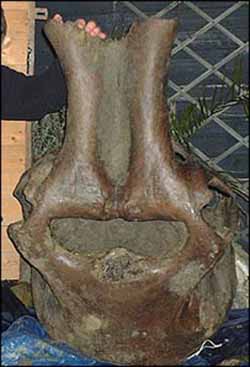
A complete mammoth skull has been unearthed in southern England, only the second to be found in Britain. The specimen was discovered in a gravel pit in the Cotswolds and is estimated to be about 50,000 years old. The only other complete specimen found in the UK is displayed in the Natural History Museum in London. Scientists will attempt to date the mammoth skull using radiocarbon methods and will also use it to study the evolutionary history of mammoths.
When mammoths roamed England BBC - November 2, 2001
A clash of the mammoths could have taken place in what is now southern England thousands of years ago.
Fossils found in Buckinghamshire and Norfolk suggest that two types of mammoth lived side-by-side in prehistoric times.
Scientists believe herds of more advanced mammoths moving south from Siberia encountered primitive European ones.
The newcomers were better adapted to a cold climate and eventually outbred their contemporaries. But the European mammoths might have interbred with the Siberian invaders, leaving their mark in the gene pool.

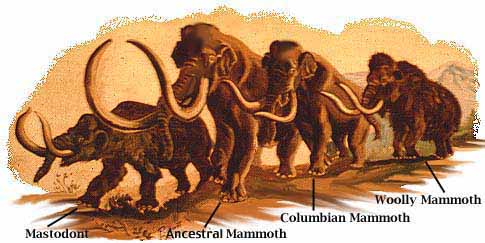
The American mastodon (Mammut americanum) lived in North America. Mastodons are thought to have first appeared almost four million years ago and became extinct about 10,000 years ago, at the same time as most other Pleistocene megafauna. Though their habitat spanned a large territory, mastodons were most common in the Ice age spruce forests of the eastern United States, as well as in warmer lowland environments.
Their remains have been found as far as 300 kilometers offshore in the northeastern United States, in areas that were dry land during the low sea level stand of the last ice age. There have been, however, findings of mastodon fossils in South America and also on the Olympic Peninsula of Washington state. Mastodon fossils have been found in Stewiack, Nova Scotia, Canada, and also were discovered north of Fort Wayne, Indiana, resulting in the "Mastodons" being chosen as the mascot for athletic teams at Indiana-Purdue University at Fort Wayne (IPFW) by the students. The uncovered fossils are displayed inside Kettler Hall on the IPFW campus.
While mastodons were furry like woolly mammoths, and similar in height at roughly three meters at the shoulder, the resemblance was superficial. They differed from mammoths primarily in the blunt, conical shape of their teeth, which were more suited to chewing leaves than the high-crowned teeth mammoths used for grazing; the name mastodon means mastoid teeth, and is also an obsolete name for their genus. Their skulls were larger and flatter than those of mammoths, while their skeleton was stockier and more robust.
Mastodons also seem to have lacked the undercoat characteristic of mammoths. The tusks of the mastodon sometimes exceeded five meters in length, and were nearly horizontal, in contrast with the more curved mammoth tusks. Young males had vestigial lower tusks that were lost in adulthood. The tusks were probably used to break branches and twigs although some evidence suggests males may have used them in mating challenges; one tusk is often shorter than the other, suggesting that, like humans, mastodons may have had laterality.
Examination of fossilized tusks revealed a series of regularly spaced shallow pits on the underside of the tusks. Microscopic examination showed damage to the dentin under the pits. It is theorized that the damage was caused when the males were fighting over mating rights. The curved shape of the tusks would have forced them downward with each blow, causing damage to the newly forming ivory at the base of the tusk. The regularity of the damage in the growth patterns of the tusks indicates that this was an annual occurrence, probably occurring during the spring and early summer.
The meat of mastodons was a food source for early humans. Archaeologists are still trying to determine what role, if any, the early human settlers of North America played in the extinction of the mastodon. Recent studies by scientists in Ohio and New York concluded that tuberculosis may have been partly responsible for the extinction of the Mastodon 10,000 years ago. Read more ...
Giant Prehistoric Mastodon Tusk Found By Amateur Fossil Hunter In Florida IFL Science - June 4, 2024
While hunting for submerged fossils off the coast of Florida, a 29-year-old man discovered the huge tusk of a mastodon, a distant cousin of the woolly mammoth and modern-day elephants.
Massive mastodon tusks discovered in Greece NBC - July 24, 2007
Researchers in northern Greece have uncovered two massive tusks of a prehistoric mastodon that roamed Europe more than 2 million years ago - tusks that could be the largest of their kind ever found. The remains of the mastodon, which was similar to the woolly mammoth but had straighter tusks as well as different teeth and eating habits, were found in an area about 250 miles north of Athens where excavations have uncovered several prehistoric animals over the past decade.
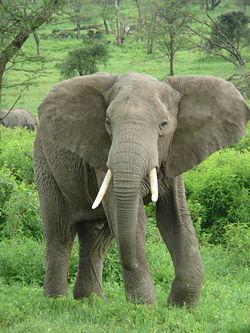
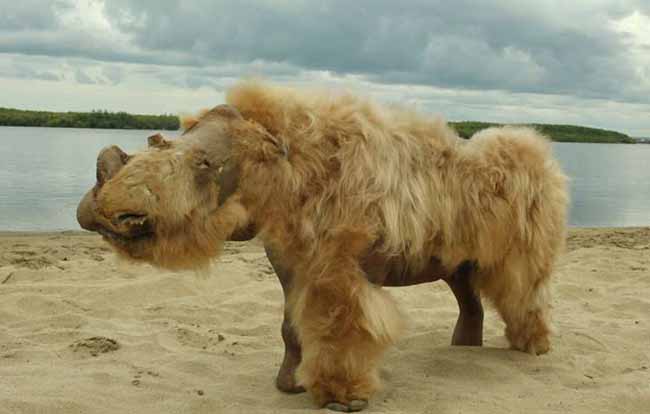
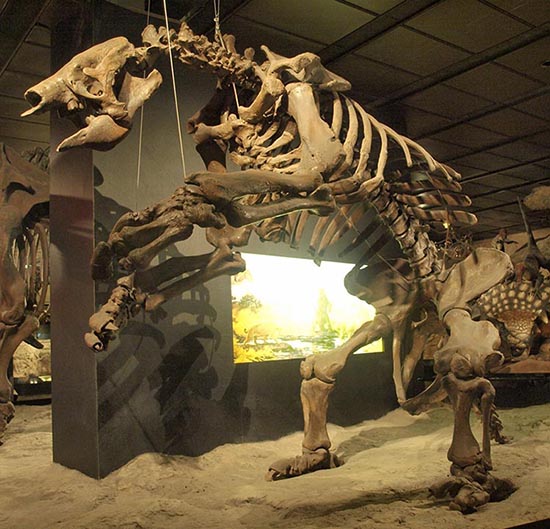
THEORY OF CRUSTAL DISPLACEMENT